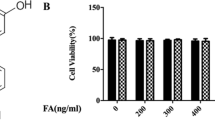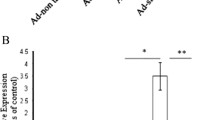Abstract.
Fenofibrate, a peroxisome proliferator-activated receptor (PPAR)-alpha activator, used as a normolipidemic agent, is thought to offer additional beneficial effects in atherosclerosis. Since angiogenesis is involved in plaque progression, hemorrhage, and instability, the main causes of ischemic events, this study was designed to evaluate the action of fenofibrate on angiogenesis. Our results show that fenofibrate (i) inhibits endothelial cell proliferation induced by angiogenic factors, followed at high concentrations by an increase in apoptosis, (ii) inhibits endothelial cell migration in a healing wound model, (iii) inhibits capillary tube formation in vitro, and (iv) inhibits angiogenesis in vivo. Concerning the mechanism of action, the inhibition of endothelial cell migration by fenofibrate can be explained by a disorganization of the actin cytoskeleton. At the molecular level, fenofibrate markedly decreased basic fibroblast growth factor-induced Akt activation and cyclooxygenase 2 gene expression. This inhibition of angiogenesis could participate in the beneficial effect of fenofibrate in atherosclerosis.
Similar content being viewed by others
Author information
Authors and Affiliations
Additional information
Received 19 November 2002; received after revision 11 February 2003; accepted 6 March 2003
RID="*"
ID="*"Corresponding author.
Rights and permissions
About this article
Cite this article
Varet, J., Vincent, L., Mirshahi, P. et al. Fenofibrate inhibits angiogenesis in vitro and in vivo. CMLS, Cell. Mol. Life Sci. 60, 810–819 (2003). https://doi.org/10.1007/s00018-003-2322-6
Issue Date:
DOI: https://doi.org/10.1007/s00018-003-2322-6




